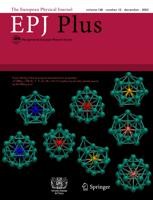Assessing the place of citizen science in modern research
New analysis presents recommendations for EU-funded research projects on how citizen science can be deployed to ensure the best possible outcomes for both research and public engagement.
New York | Heidelberg, 24 June 2024
 In recent years, numerous fields of research have seen an explosion in the volume and complexity of their scientific data. To keep pace with these changes, EU-funded research projects are increasingly crowdsourcing their data through citizen science projects, which allow the public to engage directly with their research.
In recent years, numerous fields of research have seen an explosion in the volume and complexity of their scientific data. To keep pace with these changes, EU-funded research projects are increasingly crowdsourcing their data through citizen science projects, which allow the public to engage directly with their research.
Through a detailed analysis published in EPJ Plus, Stephen Serjeant and colleagues at The Open University present new recommendations for how citizen science should be deployed to ensure the best possible outcome for research. The team’s insights could help researchers to better understand the potential impacts of this new way of doing science.
Traditionally, most major EU-funded research projects have included efforts to communicate their work to the public. However, there has long been concern that these efforts don’t provide any opportunities for the science-interested public to engage directly with research or contribute to it.
As research projects became larger and more complex, this picture started to change radically. Through citizen science projects, researchers are now crowdsourcing their data to public volunteers interested in their work, who are still far better suited for many classification tasks than machine learning algorithms. Today, the approach is applied across fields as diverse as genomics, social sciences, and astronomical imaging.
In their study, Serjeant’s team summarize the use of citizen science in several projects funded by the EU’s Horizon programme, which collectively engaged hundreds of thousands of volunteers. Their analysis shows that these programmes had a wide-ranging, diverse and deep scientific impact.
Altogether, the researchers present valuable recommendations for how citizen science should be deployed in future projects in physical science. They also clarify that if public engagement or outreach is the primary goal of a project, citizen science may not always be the best approach: instead, they suggest that other, more targeted approaches could be more effective.
References: Serjeant, S., Pearson, J., Dickinson, H. et al. Citizen science in European research infrastructures. Eur. Phys. J. Plus 139, 418 (2024). https://doi.org/10.1140/epjp/s13360-024-05223-x
Further Information
For more information visit: www.epj.org
Services for Journalists
The full-text article is available here.
Contact
Sabine Lehr | Springer | Physics Editorial Department
tel +49-6221-487-8336 | sabine.lehr@springer.com
